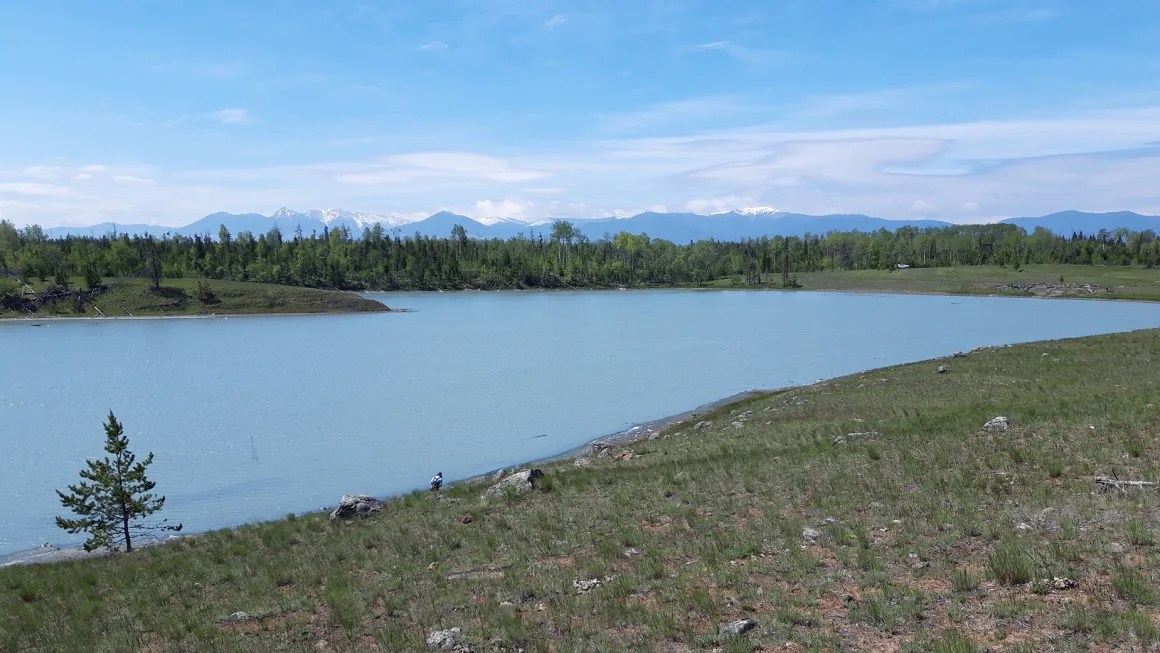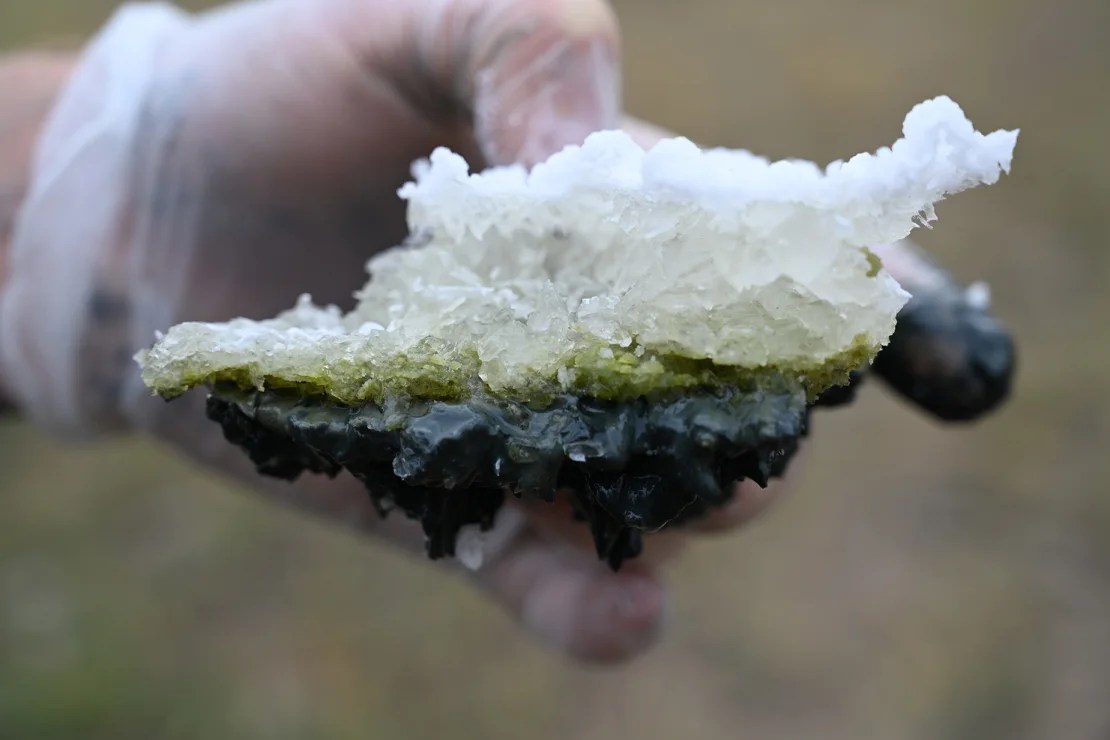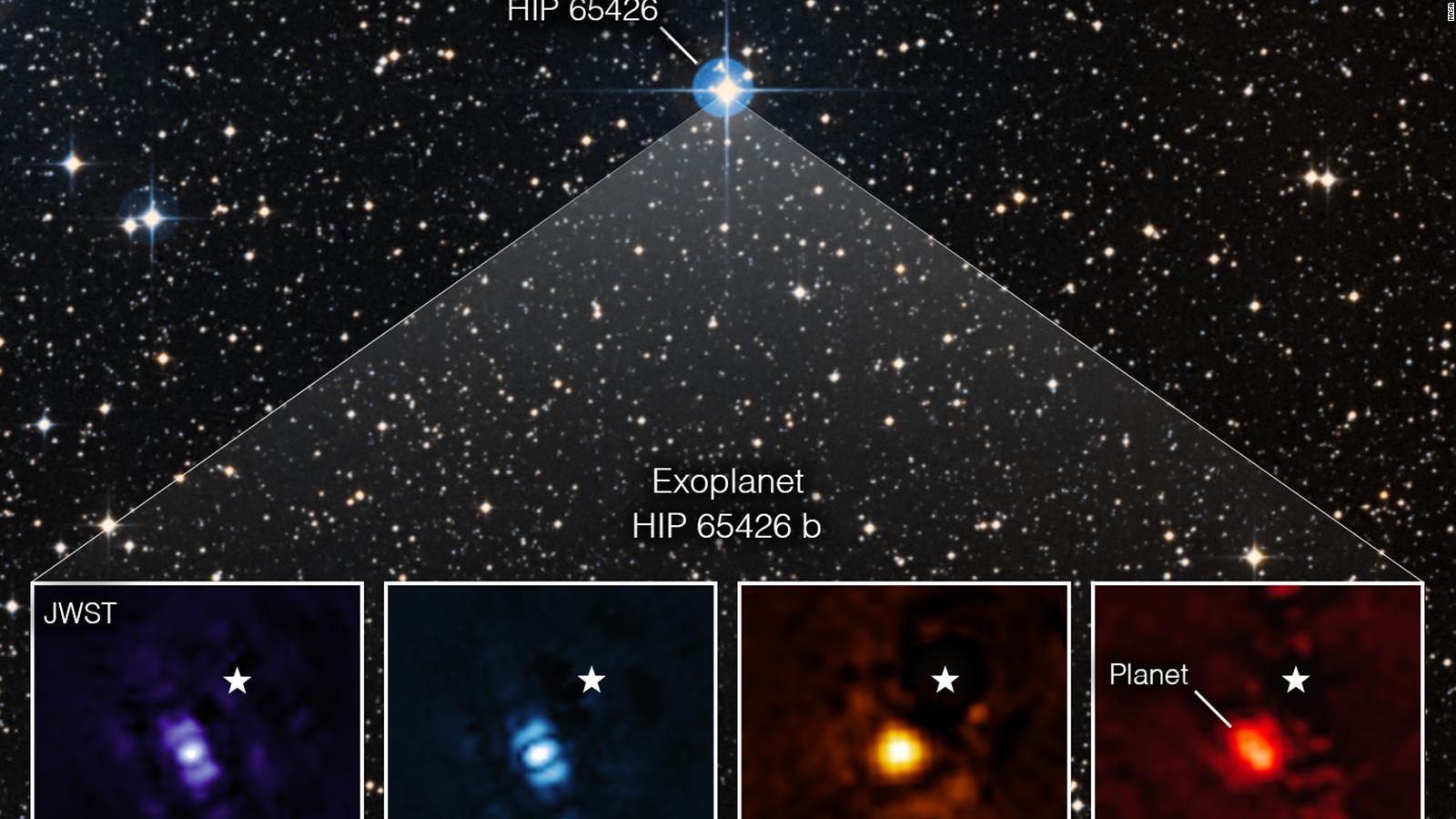(CNN) — Imagine a completely sterile world. Before you is a volcanic landscape devoid of flora and fauna. Scattered across this gray and black landscape are shallow water bodies. In each of these natural reservoirs, the precise combination of chemicals and physical conditions that can act as a source of life on our planet is created.
Some scientists think the scene may have been more like this, rather than the ocean system, when life first appeared on Earth about 4 billion years ago, and the study focused on a modern-day lake in the Canadian province of British Columbia. provides new support for that idea.
The shallow, salty water that sits atop volcanic rock known as Lost Chance Lake holds clues that carbonate-rich lakes on ancient Earth may have been “cradles of life,” says study co-author David Catling. Professor of Earth Sciences at the University of Washington. The discovery, published Jan. 9 in the journal Nature, will advance scientific understanding How life began.
“We were able to look for specific conditions that people use to synthesize the building blocks of life in nature,” Catling said. “We think we have a very promising place for the origin of life.”

British Columbia's Last Chance Lake, pictured here during the rainy season in June 2022, has the highest concentration of concentrated phosphate ever recorded in any natural body of water on Earth. (David C. Gatling)
Catling and his colleagues first learned about Lake after discovering an unpublished master's thesis from the 1990s in a literature review. But the researchers had to see for themselves.
Lake of Last Chance
The depth of Lost Chance Lake is not more than 30 cm. Located 1,000 meters (3,280 ft) above sea level on a volcanic plateau in British Columbia, it contains the highest concentration of phosphate ever recorded in any natural body of water on Earth.

Haas shows a portion of the dry season lake surface taken from Lost Chance Lake in September 2022. Researchers used the lake as an “analog environment” to understand Earth's earliest soda lakes. (David C. Gatling)
A key component of biological molecules, phosphate is a chemical compound containing phosphorus, the element that sustains life. It is found in molecules such as RNA and DNA, and in the ATP molecule, which is needed for energy production in all forms of life. The amount of phosphate in Lost Chance Lake is 1,000 times greater than in oceans or lakes, says Sebastian Haas, a postdoctoral researcher who studies the microbiology and chemistry of aquatic environments at the University of Washington, who led the study. .
Between 2021 and 2022, a team of researchers visited Lost Chance Lake to collect and analyze water and sediment samples.
That's when they discovered that Last Chance Lake was formed not only by phosphate, but by the reaction in the lake between the mineral dolomite, calcium, magnesium and carbonate, which allows phosphorus to accumulate in this environment. The complex chemical processes struck by the minerals in the volcanic rock that formed the lake, as well as the dry climate, effectively created unique concentrations of phosphate, a set of conditions that researchers believe may have once led to the emergence of life on Earth. According to Haas.
“We add credence to the idea that this kind of environment would be favorable for the origin of life, and that's plausible,” he said.
Lost Chance Lake is not 4 billion years old, in fact it is estimated to be less than 10,000 years old. The site is simply a modern analog or natural snapshot of the past that ultimately gives scientists a chance to better understand what primitive Earth might have looked like outside of the lab.
“There is every reason to believe that similar lakes were first on Earth about 4 billion years ago, because the volcanic rocks on which Last Chance Lake sits are essentially a prerequisite for the formation of soda lakes,” he said. “And what we partially show here is that soda lake water chemistry is a prerequisite for these high phosphate levels.”
Darwin's Hot Tubs
“Soda lakes,” such as Lost Chance Lake, are shallow bodies of water rich in dissolved sodium and carbonate, such as baking soda, which usually comes from contact between water and volcanic rock. They are found all over the world, but are much less common than other saltwater bodies.
“These types of lakes have high levels of phosphate, which are suitable for people to make (genetic molecules) in the lab,” Catling said.
When scientists attempted in the laboratory to replicate the chemical reactions that form biomolecules key to the origin of life, the required phosphate concentrations were millions of times higher than levels typically found in the world's natural waters.
“If lakes of this type existed on the ancient Earth, they would have had a high phosphate content similar to that of Lost Chance Lake,” Gatling added.
Bodies of water like these have long been on scientists' radar as possible sources of primitive life. In the 19th century, Charles Darwin first wrote about his “warm little pond” theory, which proposed that warm, shallow, phosphate-rich lakes may have evolved the first molecules of life.
“Part of what (Darwin) envisioned was these bubbling pools … like Yellowstone,” said Matthew Pacek, a professor at the University of South Florida who studies the chemical and biological origins of phosphorus.
But this is not the popular theory of how life appeared on Earth billions of years ago. Another is that life began in hydrothermal vents in the deep ocean.
According to Pasek, who was not involved in the research, the new study adds to the evidence supporting the warm small pool hypothesis.
“The fact that you can have high concentrations of phosphate in these ponds is certainly reinforced by this finding,” he said. “It shows, 'This is how it's done.'”
Yet, phosphate is not the only material necessary for the origin of life in large quantities. A list of those prerequisites includes carbon and nitrogen sources, as well as the appropriate chemical and physical elements that allow the necessary chemical compounds and reactions to occur (including phenomena known as wet-dry cycles).
But the authors don't argue that today's Lost Chance Lake contains all the building blocks of life, just a few essential pieces.
“The current Lost Chance Lake lacks many chemicals that we now believe are important for the origin of life,” Haas said, citing cyanide as an example. Previous studies suggest that the material may have been added to a primitive version of Lake Soda.
According to Woodward Fischer, a geologist at the California Institute of Technology who was not involved in the study, while “this work does not uniquely resolve the question of where life originated,” “it highlights the current environments on Earth's surface” that scientists can study in greater detail to better understand the mechanisms that led to the establishment of life on our planet and elsewhere. .”
Origin of life on Earth and beyond
If life actually originated in soda lakes on land rather than at the bottom of the ocean, that knowledge could, in theory, help search for evidence of life beyond Earth.
“If you think life originated at the bottom of the ocean, you can take a closer look at the sub-glacial ocean on Saturn's and Jupiter's moons,” Haas said. “But if you think that life originated on Earth's surface, planets like Mars are very important.”
The same type of rock formation that creates soda lakes is found on the surface of rocky planets like Mars, suggesting that life may have evolved similarly elsewhere in the universe.
“Understanding how life evolved on Earth is of great importance to the search for life beyond Earth,” Haas told CNN. “A better understanding of how life evolved on Earth allows us to search for life on other planets in the solar system or on the moons of other planets.”
Ayurella Horn-Muller reports for Axios and Climate Central. His book, “Devoured: The Extraordinary Story of Kudzu, the Vine That Tate the South,” is due out in the spring.

:quality(75)/cloudfront-us-east-1.images.arcpublishing.com/elcomercio/BUEMG3WFHZCWZGSXOA5N6TEIC4.jpg)


